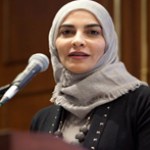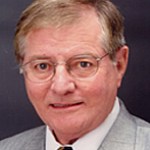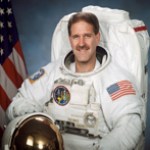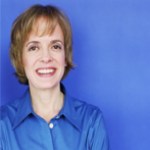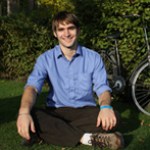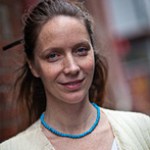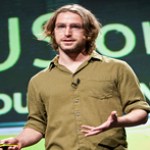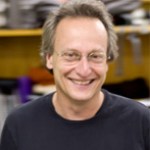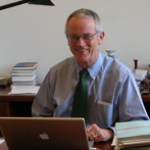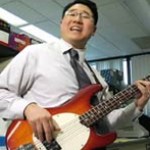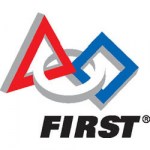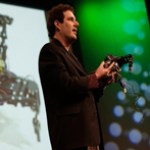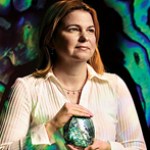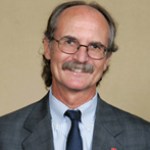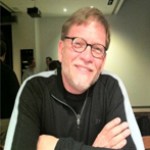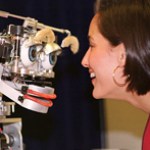
Since leaving her native Saudi Arabia to pursue her dream in biotechnology, Hayat Sindi, a nanotechnology researcher and bio tech entrepreneur, has already reached some prodigious milestones in her young career, such as:
--Overcoming formidable cultural and personal obstacles to become the first woman from the Gulf Region to earn a Ph.D. in biotechnology.
--Becoming the first Arab woman in 2009 to win a fellowship in the respected American
innovation network PopTech.
-- Being chosen under the White House initiative to be featured with other innovators around the country in "Connect a Million…
When Alan McCormack began his career in education several decades ago as a seventh-grade science teacher in Poughkeepsie, N.Y., he tried everything he could to enhance students' interest in the concepts of science.
"I first thought I could be successful automatically just by following techniques used by my college science professors -- lecturing and writing concepts on the blackboard - but that wasn't very engaging for seventh graders," laughs Alan, who serves as professor of Science Education at San Diego State University in San Diego, CA, and as president of the National Science Teachers…
The Space Shuttle lifting off and headed for the nether regions of space, although a majestic sight, is one of the most grueling and critical parts of the space mission because of all the raw power and energy expended by the craft.
NASA astronaut John Mace Grunsfeld knows the experience well. He's flown on five Shuttle missions between 1995 and 2009, including a 16-day mission of ultraviolet observations with the Astro observatory, in addition to the fifth mission to the Russian Mir space station, and three servicing missions to the Hubble Space Telescope (including the final Hubble…
Pulitzer Prize-winning science writer Natalie Angier has spent her entire career
translating complex scientific research information into engaging, stimulating
prose that the average person can understand.
In fact, says Marcela Valdes of Publisher's Weekly: "She is the kind of woman you
wish you'd had beside you in high school chemistry--tiny, ferociously intelligent,
she'd eye you over a boiling beaker and explain exactly what the experiment was
all about."
Simplicity, clarity, passion, vivid imagery, combined with an uncompromising
respect for scientific accuracy are the hallmarks of…
We've all seen (and used) them: seemingly endless amounts of plastic and Styrofoam material for shipping and packaging everything from televisions and computers to toys and mail parcels. But we often never think about the impact those reams of bubble wrap and blocks of foam will have on our landfills and other parts of the environment when disposed of.
Well, Eben Bayer is on a serious mission to replace such "unsustainable" packaging products with more eco-friendly material that is biodegradable and home compostable . What's more, it's made from seed husks and mushroom roots!
Eben is co-…
In her quest to study the fundamentals of climate change, prominent geochemist and
climatologist Kim Cobb has sailed on six oceanographic research voyages and led five caving expeditions to the rainforests of Borneo.
Her challenge: working out of her primary research base in the tropical Pacific, how to better understand and reconstruct climate variability of the past in order to construct a sense of what climate changes or trends to expect in the future, including, for example rainfall.
"There is so much we still do not understand about predicting rainfall, especially because
satellite…
Meet Nifty Fifty speaker Ben Dubin-Thaler.
With a refreshing measure of ingenuity, Ben Dubin-Thaler is proving that some of
the most exciting lessons in science can occur outside the classroom - in a bus.
That's the Cell Motion BioBus, a self-powered, fully-equipped mobile microscopy
lab that Ben developed and operates to bring hands-on science education
to students in New York City and other areas, especially those who lack such
resources at school.
"I grew up loving science and looking through microscopes," says Ben, the
biophysicist who founded and directs the non-profit Cell Motion…
Roberto Kolter, Professor of Microbiology and Molecular Genetics at Harvard's
Medical School, believes that microbes, bacteria in particular, have gotten a bad
rap. "Oh sure, occasionally a nasty one like Salmonella or E. coli gets through
and causes trouble," he says, "but for the most part bacteria are quite beneficial,
helping us to digest our food, for example, and aiding in the maintenance of the
ecology."
Microbes are also ubiquitous - living practically everywhere - but for the most
part, scientists still know little about them, Roberto adds. To illustrate this point,
Roberto likes to…
Meet Larry Bock, the founder of the USA Science and Engineering Festival, interviewed by engineering.com
What do you think is important celebrating science and why we should celebrate science?
As a young student growing up in the late 1940s and early 1950s, Charles (Chuck) Vest
remembers taking endless aptitude tests in school - all of them indicating that he should become a journalist, a psychologist or a historian. Engineer was way down on the list, test results always revealed, strongly suggesting he had little or no aptitude for this field.
Oh, how wrong they proved to be.
Chuck not only proved to have a keen aptitude for engineering, his illustrious career in the field has seen him assume challenging leadership roles in some of engineering's highest echelons - including…
How does the brain create and perceive music? More specifically, what goes on inside the heads of musicians when they're in the groove composing a song or improvising with their instruments or voice? These questions have long intrigued researcher Charles Limb, and to find answers he's turned to studying the brains of some likely individuals: jazz musicians and rap artists.
In this quest, Charles brings some interesting credentials. He's an auditory surgeon by training, specializing in a surgery called cochlear implantation - a way to help deaf people hear again. He currently practices at…
Meet CTO of Host Sponsor Lockheed Martin interviewed by Engineering.com at the 2010 USA Science and Engineering Festival.
Why do you think getting American's excited about science is important? What do you think we can do about it? What about science do you find exciting?
Meet Nifty Fifty Speaker Catherine Mohr, Nominated by FIRST.
She began her career as a mechanical engineer, working many years developing alternative-energy vehicles and high-altitude aircraft. But a mid-career change set Catherine Mohr on a different path for which she is known today: developing the next generation of surgical robots and robotic procedures that allow patients to heal faster and better.
If the idea of a robot helping to perform surgery makes you nervous -relax. Thousands of robotically assisted surgeries are performed every year in the U.S, operations which allow human…
Hod Lipson is noted for bringing biologically-inspired approaches to the study of robotics - all in an effort to answer what he believes to be two great challenging questions in engineering: "First, can we design machines that can design other machines, and second, can we make machines that can make other machines?" he asks.
Both of these questions, Hod contends, lie at the crux of understanding the engineering process itself, and science's ability to design, make and maintain complex machines, like robots, in the future.
Biological life itself, he says, has answered many of these questions…
If researcher Angela Belcher has her way, electric cars of the future will be
equipped with lightweight, inexpensive batteries that can store enough electricity
to make driving such vehicles even more practical. Also on her laboratory "to
do" list: developing tougher electronic material so that you'll never lose your
computer again to an errant glass of water spilled on your keyboard.
Skillfully combining the disciplines of materials science, engineering and
bioengineering, Angela is focused on developing tougher and more effective
materials and devices for clean energy, electronics, the…
Watch a little about Microbes from the Fall 2010 USA Science and Engineering Festival.
The average science student knows that microbiology is the study of bacteria and other microorganisms, especially those that cause disease and other threats to health.
But what the public often does not realize is that the work of the microbiologist is growing ever more important today as such microorganisms are linked at an alarming rate to outbreaks of new infectious disease and food poisoning caused by bacteria such as Salmonella and E. coli, in addition to the growing difficulty in treating…
Check out Bill Nye the Science Guy being interviewed by Engineering.com at the USA Science and Engineering Festival and discussion about the space policy today.
For David Bolinsky - the co-creator, with his talented team, of the highly-acclaimed computer animated science film, The Inner Life of a Cell - the plunge into the wonders of medical animation began at age four when he went to see the movie Fantasia.
From that moment, he was hooked.
"That did it for me," says David. "From that minute on I wanted to be an animator." Now a widely-known medical illustrator and animator, David has devoted his career, and his artistic gift, to displaying complex medical concepts in a fresh, clear light.
The son of a sculptor and art history professor, David…
She has developed some of the world's most famous robots - humanoid
creatures like "Kismet" (a robotic head that has been widely featured in
international media) and "Nexi," a mobile dexterous social robot that learns from
and interacts with people in an intelligent, life-like and sociable manner.
But Cynthia Breazeal, associate professor of Media Arts and Sciences at the
Massachusetts Institute of Technology where she founded and directs the
Personal Robots Group at the Media Lab, says she has much more ground to
cover in the growing field of social robotics.
"My research explores…
Engineering really matters. Did you know that all the major challenges facing the U.S. and the rest of the world - from medicine and homeland security to energy, food and water supply and communications - cannot be solved without engineering? In this revealing video clip, hear what Dr. Chuck Vest, president of the National Academy of Engineering (NAE) and former president of the Massachusetts Institute of Technology, has to say about what it will take for America to train enough engineers to meet the challenges of tomorrow.
